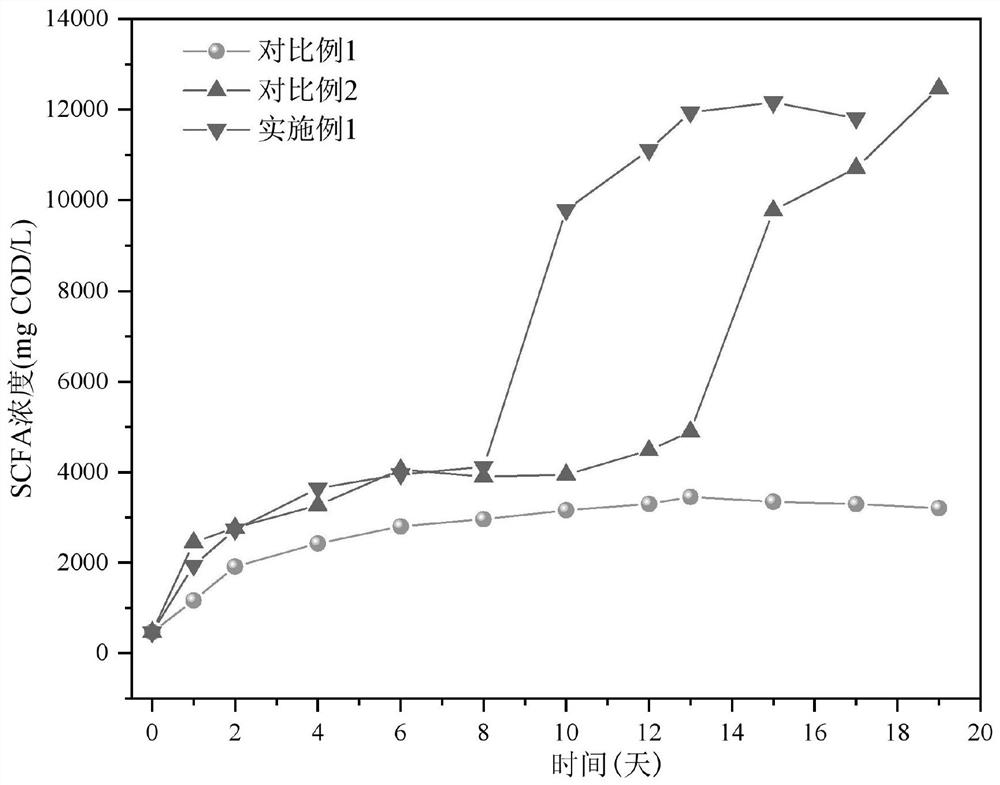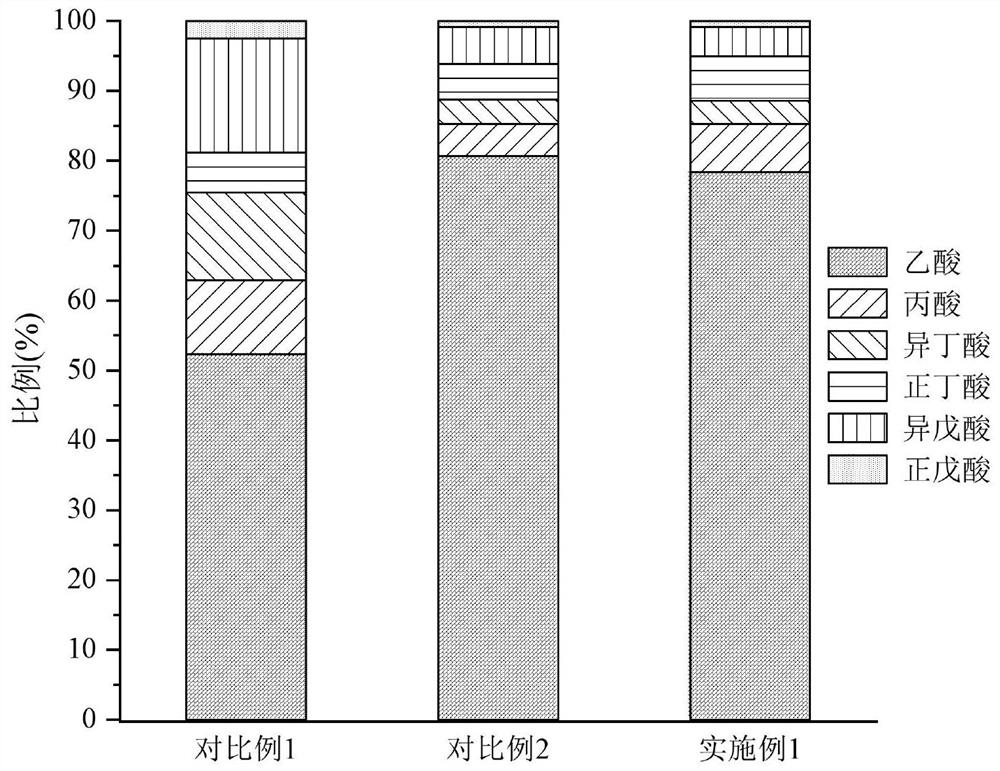Method for improving yield and purity of short-chain fatty acid in residual sludge and waste oil co-fermentation system
A technology for short-chain fatty acids and excess sludge, applied in fermentation, biological sludge treatment, etc., can solve the problems of SCFA production inhibition and LCFA anaerobic degradation difficult to carry out, to improve yield and purity, improve acid production efficiency, significantly Effect of carbon offset effect
- Summary
- Abstract
- Description
- Claims
- Application Information
AI Technical Summary
Problems solved by technology
Method used
Image
Examples
Embodiment 1
[0033] The embodiment of the present invention provides a method for improving the output and purity of short-chain fatty acids in the co-fermentation system of excess sludge and waste oil, which specifically includes the following steps:
[0034] S1. Concentrate the excess sludge from a sewage plant to 9000mg / L (VSS), then mix the concentrated excess sludge and waste oil in a reaction vessel with an effective volume of 500mL to obtain a fermentation substrate. The mass ratio of C and N elements in the substance is 105:5;
[0035] S2. Sodium sulfate is added to the fermentation substrate obtained in step S1 to obtain a primary modulation fermentation substrate, and the mass ratio of C and S elements in the primary modulation fermentation substrate is 9:1;
[0036] S3, adding granular activated carbon to the primary modulation fermentation substrate obtained in step S2, to obtain the target modulation fermentation substrate;
[0037] Wherein, the mass ratio of the dosage of gr...
Embodiment 2
[0041] The method for improving the output and purity of short-chain fatty acids in the co-fermentation system of excess sludge and waste oil provided by the embodiments of the present invention specifically includes the following steps:
[0042] S1. Concentrate the excess sludge from a sewage plant to a VS of 9000mg / L, then mix the concentrated excess sludge and waste oil in a reaction vessel with an effective volume of 500mL to obtain a fermentation substrate. The mass ratio of C and N elements is 100:5;
[0043] S2. Sodium sulfate is added to the fermentation substrate obtained in step S1 to obtain a primary modulation fermentation substrate, and the mass ratio of C and S elements in the primary modulation fermentation substrate is 8:1;
[0044] S3, adding granular activated carbon to the primary modulation fermentation substrate obtained in step S2, to obtain the target modulation fermentation substrate;
[0045] Wherein, the mass ratio of the dosage of granular activated...
Embodiment 3
[0049] The method for improving the production of short-chain fatty acids in the co-fermentation system of excess sludge and waste oil provided by the embodiments of the present invention specifically includes the following steps:
[0050] S1. Concentrate the excess sludge from a sewage plant to a VS of 9000mg / L, then mix the concentrated excess sludge and waste oil in a reaction vessel with an effective volume of 500mL to obtain a fermentation substrate. The mass ratio of C and N elements is 110:5;
[0051] S2. Sodium sulfate is added to the fermentation substrate obtained in step S1 to obtain a primary modulation fermentation substrate, and the mass ratio of C and S elements in the primary modulation fermentation substrate is 10:1;
[0052] S3, adding granular activated carbon to the primary modulation fermentation substrate obtained in step S2, to obtain the target modulation fermentation substrate;
[0053] Wherein, the mass ratio of the dosage of granular activated carbo...
PUM
 Login to View More
Login to View More Abstract
Description
Claims
Application Information
 Login to View More
Login to View More - R&D Engineer
- R&D Manager
- IP Professional
- Industry Leading Data Capabilities
- Powerful AI technology
- Patent DNA Extraction
Browse by: Latest US Patents, China's latest patents, Technical Efficacy Thesaurus, Application Domain, Technology Topic, Popular Technical Reports.
© 2024 PatSnap. All rights reserved.Legal|Privacy policy|Modern Slavery Act Transparency Statement|Sitemap|About US| Contact US: help@patsnap.com










